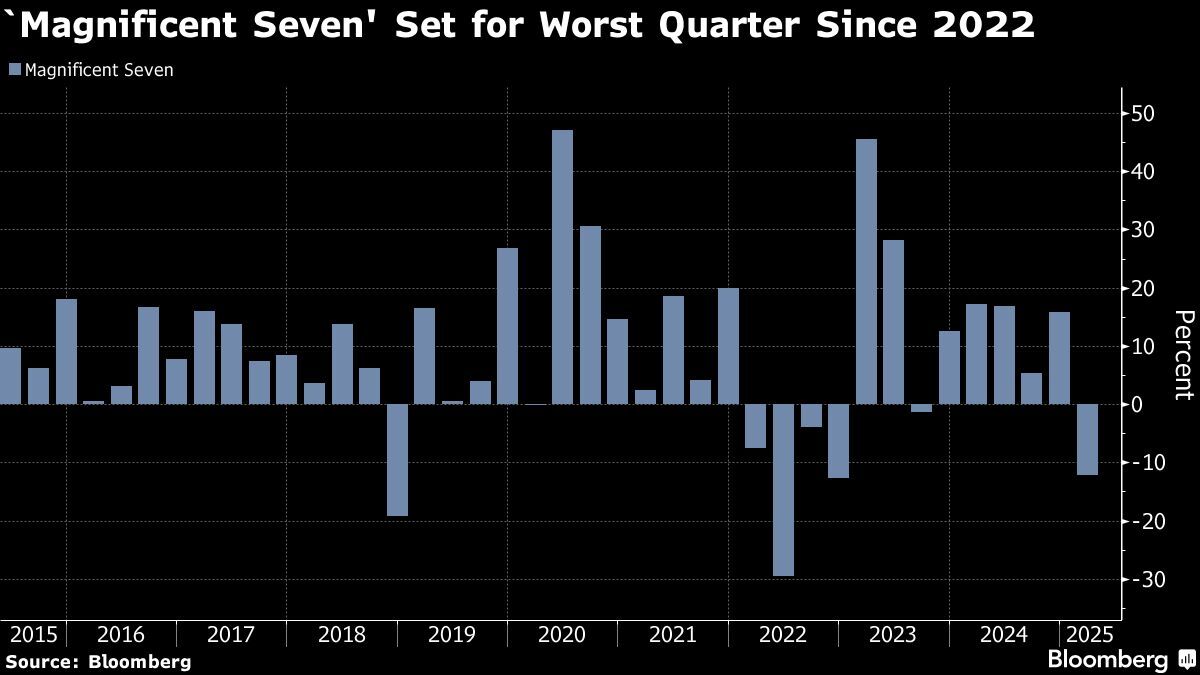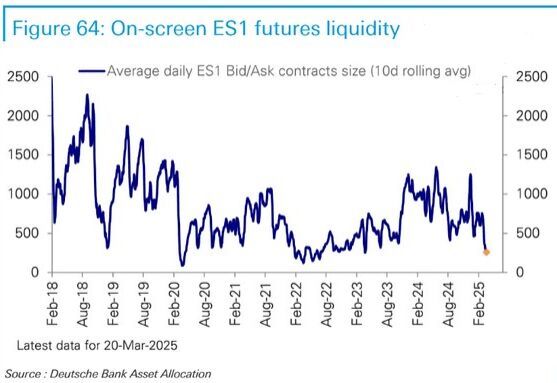
(March 27): Three days of relative peace were broken on Wall Street, with big tech driving major stock benchmarks lower, as concern about a trade war’s impact on the economy and inflation resurfaced to squelch risk appetites.
In late hours, a US$589 billion (RM2.61 trillion) exchange-traded fund tracking the S&P 500 dropped as US President Donald Trump signed an order to implement a 25% tariff on auto imports, expanding a trade war designed to bring more manufacturing jobs to the US and setting the stage for an even broader push on levies next week. American automakers General Motors Co and Ford Motor Co fell.
The move comes ahead of an announcement of so-called reciprocal tariffs expected on April 2 — a bid to drive down other countries’ barriers and shrink US trade deficits. Federal Reserve Bank of St Louis president Alberto Musalem said it’s not clear any inflationary impact from tariffs will prove temporary, and cautioned that secondary effects could prompt officials to hold rates steady for longer.
“Uncertainty on the tariff front remains ridiculously high, leaving it incredibly tough for businesses or consumers to plan more than about a day into the future, and still making it nigh-on impossible for market participants to price risk,” said Michael Brown, a strategist at Pepperstone.
Equities slipped on Wednesday, led by losses in the group of “Magnificent Seven” megacaps — whose quarterly rout is set to be the worst since 2022. Nvidia Corp and Tesla Inc dropped at least 5.5%. Microsoft Corp has walked away from new data centre projects in the US and Europe, said TD Cowen analysts. A gauge of big banks snapped a streak of eight straight days of gains.
The S&P 500 slid 1.1%, failing to stay above its key 200-day moving average. The Nasdaq 100 fell 1.8%. The Dow Jones Industrial Average dropped 0.3%. A Bloomberg gauge of megacaps sank 3%. The Russell 2000 slipped 1%.
The yield on 10-year Treasuries advanced three basis points to 4.35%. The dollar gained 0.3%.
“Today was a reminder that despite the recent rebound in stocks, volatility remains as policy uncertainty lingers,” said Daniel Skelly, the head of Morgan Stanley’s wealth management market research and strategy team.
Moreover, Skelly says next week’s tariff deadline will likely be more of a starting point for negotiations than a conclusion, so the market may struggle to recover in a straight line higher.
“It’s a common maxim that ‘markets hate uncertainty,’ and the ambiguity around the tariff announcement has undoubtedly hit risk sentiment already, so we may see a small relief rally in risk assets and the greenback once the announcement is behind us,” said Matthew Weller at Forex.com and City Index.
That said, Weller noted that hints of further tariffs to come and the likelihood that punitive tariffs may be used as negotiating levers in the coming months mean that any risk rally may be short-lived.
That’s until there’s confidence that the “relentless stream of economy-disrupting policies are fully behind us,” Weller concluded.
Tariffs and weakening survey data are set to weigh on the US stock market for the rest of the year, according to Barclays plc strategists led by Venu Krishna, who cut their 2025 S&P 500 price target to 5,900 from 6,600.
Worries over the economic effects of the global trade war are sapping liquidity in US stocks, creating a headache for institutional investors that could also boost volatility in broader markets.
Liquidity in S&P 500 stock-index futures, as measured in the most-active contract, stands at a two-year low, data compiled by Deutsche Bank AG showed.
“2025 may continue to challenge investors through a dueling mix of macro uncertainty within the geopolitical environment and shifting internal liquidity conditions,” said Dan Wantrobski at Janney Montgomery Scott. “We remain concerned that there may be a profound change in underlying liquidity conditions which can exert influence on the risk markets over the coming months.”
From a technical standpoint, he noted that the recent “oversold rally effort” is starting to get a “bit sloppy”.
“We remain cautious over the near term and continue to look for confirmation that a bottom has been firmly put in place,” Wantrobski concluded.
Some of the main moves in markets:
Stocks
- The S&P 500 had fallen 1.1% as of 4pm New York time
- The Nasdaq 100 fell 1.8%
- The Dow Jones Industrial Average fell 0.3%
- The MSCI World Index fell 1%
- The Bloomberg Magnificent 7 Total Return Index fell 3%
- The Russell 2000 Index fell 1%
Currencies
- The Bloomberg Dollar Spot Index rose 0.3%
- The euro fell 0.4% to US$1.0751
- The British pound fell 0.4% to US$1.2888
- The Japanese yen fell 0.4% to 150.57 per dollar
Cryptocurrencies
- Bitcoin fell 1.5% to US$86,552.46
- Ether fell 3.2% to US$2,000.41
Bonds
- The yield on 10-year Treasuries advanced three basis points to 4.35%
- Germany’s 10-year yield was little changed at 2.80%
- Britain’s 10-year yield declined three basis points to 4.73%
Commodities
- West Texas Intermediate crude rose 1.1% to US$69.73 a barrel
- Spot gold was little changed
Uploaded by Isabelle Francis
- Ukraine to seek more US investments in talks over economic deal — Bloomberg
- Businessman with 'Tan Sri' title, said to be O&G industry veteran, arrested for RM10m scam
- Indonesian Muslims to celebrate Eid on Monday
- Myanmar hit by fresh 5.1 aftershock, tremors felt in neighbouring countries
- Myanmar's quake toll passes 1,000 as foreign rescue teams arrive


